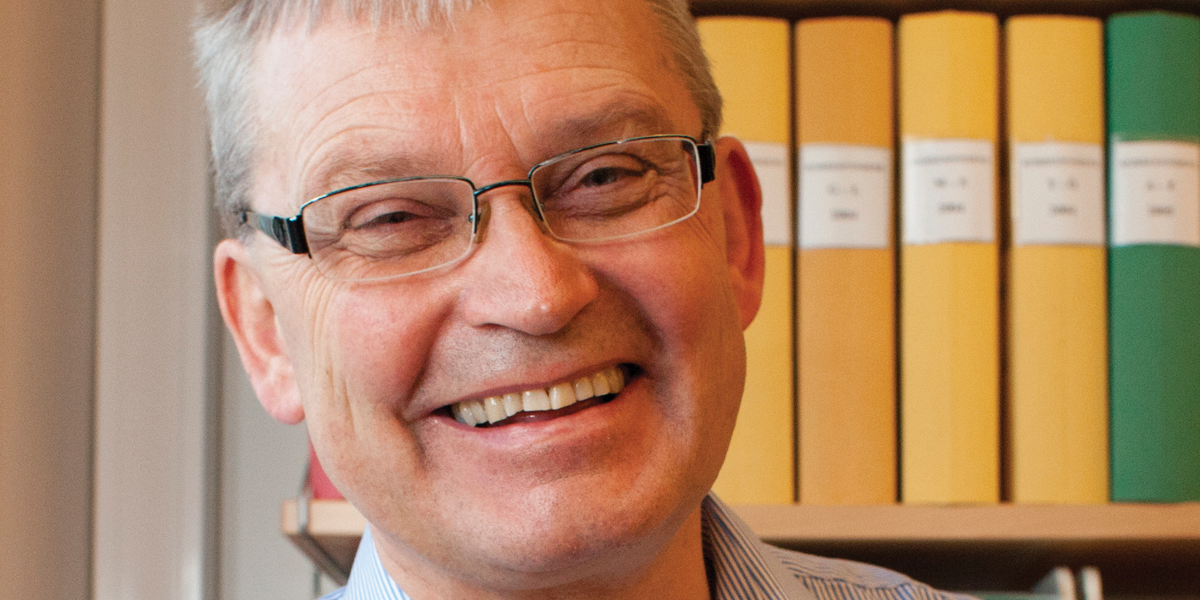Student of metastasis
Studies of how tumor cells prepare to migrate suggest new ways to thwart the spread of cancer.
Every year, Carl-Henrik Heldin convenes a summit that also serves as a homecoming of sorts. The gathering typically includes dozens of researchers from around the world who once worked at Ludwig Uppsala, and his current colleagues at the branch, where Heldin is the director. At the meetings, which are held alternately in Uppsala and in Leiden, The Netherlands, the researchers grill each other, examine their own assumptions, get a sneak peek at new data and make sure they’re staying current on their shared scientific obsessions.
Heldin’s knack for staying connected serves him well in other ways. Until 2014, he was vice president of the European Research Council, which provides generous funds to gifted researchers in Europe, and he was appointed chairman of the board of the Nobel Foundation in 2013. This outreach supports his driving interest: the study and conquest of cancer. “Our colleagues motivate us to go one step further,” he says.
Last year, Heldin and his colleagues took a big step forward in an area of enduring interest to the Uppsala summiteers: transforming growth factor ß (TGF-ß), a molecular switch that appears to be a key driver of metastasis. In two studies published in 2014, the team showed how TGF-ß induces the reengineering of a cancer cell. Their research suggests that g-secretase inhibitors, a class of drugs being tested as a treatment for Alzheimer’s disease, may also thwart metastasis.
Breaking out
Any settled cell that hopes to become metastatic must first bust out of its comfort zone, cutting connections to neighboring cells, pulling out molecular pegs, loosening up its form and preparing to go mobile. The process that makes all this possible is called the epithelial-mesenchymal transition, and it can be triggered when TGF-ß binds to receptors on the surface of the cell, firing up a vast network of signaling circuits within.
“The process is extremely multifactorial,” says Heldin. “We have been gradually teasing out one component after another.”
In one of the 2014 studies, Heldin collaborated with Maréne Landström, a former Ludwig Uppsala researcher who is now a professor of pathology at Umeå University in Sweden. The pair and their colleagues had previously shown that, in some cells, TGF-ß prompts cleavage of a TGF-ß receptor, generating a small receptor fragment that migrates to the cell’s nucleus. Once in the nucleus, that fragment helps turn on genes that promote cell invasion.
Heldin, Landström and their colleagues showed how an enzyme called g-secretase snips the receptor, generating the protein fragment implicated in metastasis. g-secretase also operates in a separate process to promote Alzheimer’s disease, and the drugs that shut it down have been extensively tested in human studies. The researchers found that these drugs prevented cancer cell invasion in a petri dish and inhibited tumor growth in mice implanted with prostate cancer cells. They are now testing whether inhibition of this pathway can also quell other types of tumors.
In his second major study of 2014, Heldin collaborated with current Ludwig Uppsala investigator Aristidis Moustakas to show how a nuclear protein called high mobility group A2 (HMGA2) can carry out the instructions transmitted by TGF-ß. They find that HMGA2 helps turn off a key gene involved in gluing neighboring cells together. With that gene shut down, cells become invasive.
Bringing it all back home
Heldin and his colleagues are now planning to build a complete map of the genes that are turned on or off as cells prepare for metastasis and undergo epithelial-mesenchymal transition, a project that could generate new research trajectories and expose new drug targets. They are also working to identify compounds that can stop cancer by inhibiting TGF-ß signaling and metastasis.
Heldin says support from Ludwig has helped him to nurture and develop the next generation of researchers. “We create a good milieu for young scientists,” he says. “We give them the opportunity to develop and then to fly.” Luckily for Ludwig and for cancer research, many of them like to come back home every once in a while.
REFERENCES
Gudey SK, Sundar R, Mu Y, Wallenius A, Zang G, Bergh A, Heldin CH, Landström M. TRAF6 stimulates the tumor-promoting effects of TGFb type I receptor through polyubiquitination and activation of presenilin 1. Sci Signal. 2014 Jan 7;7(307):ra2. doi: 10.1126/scisignal.2004207.
Tan EJ, Kahata K, Idås O, Thuault S, Heldin CH, Moustakas A. The high mobility group A2 protein epigenetically silences the Cdh1 gene during epithelial-to-mesenchymal transition. Nucleic Acids Res. 2015 Jan;43(1):162-78. doi: 10.1093/nar/gku1293. Epub 2014 Dec 9.
